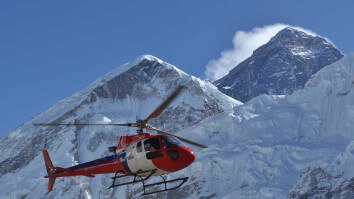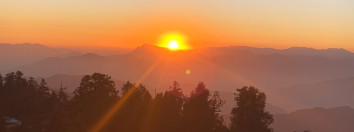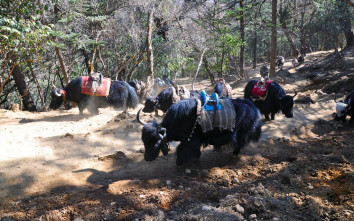Is Trekking Experience Required for Trekking in Nepal?
17th Sep, 2023
- himalayaheart

Introduction
Nepal, with its majestic Himalayan peaks and stunning landscapes, has long been a magnet for trekkers and adventurers. From the iconic trails of the Annapurna and Everest regions to the hidden gems of Langtang and Makalu, Nepal offers a wide range of trekking experiences. But a common question for aspiring trekkers is, "Is trekking experience required for trekking in Nepal?" In this comprehensive guide, we will explore the options available to both novice and experienced trekkers with Himalaya Heart Treks and Expedition.
Table of Contents
The Appeal of Trekking in Nepal
Trekking in Nepal is a dream for many, and for a good reason. The country boasts diverse landscapes, rich cultural heritage, and unparalleled views of the world's highest peaks. The allure of the Himalayas, combined with the chance to immerse oneself in local cultures and traditions, makes Nepal an irresistible destination for trekking enthusiasts.
Trekking Experience: Not Always a Prerequisite
One of the unique aspects of trekking in Nepal is that it caters to a wide range of skill levels, from beginners to seasoned mountaineers. While prior trekking experience can be an advantage, it is not always a prerequisite for exploring the Nepali trails.
Himalaya Heart Treks and Expedition offers a variety of trekking options that accommodate trekkers of all levels. Here's a breakdown of some of the choices:
1. Beginner-Friendly Treks:
-
Ghorepani Poon Hill Trek: This trek is perfect for beginners. The trail is well-maintained, and the altitude is relatively low. It offers stunning views of the Annapurna and Dhaulagiri ranges.
-
Langtang Valley Trek: Another excellent choice for beginners, the Langtang Valley Trek offers a relatively moderate altitude and opportunities to explore local culture.
2. Moderate to Challenging Treks:
-
Everest Base Camp Trek: While considered challenging due to altitude, trekkers with determination and moderate fitness can complete this iconic trek. It's all about proper acclimatization and preparation.
-
Annapurna Circuit Trek: This trek is suitable for those with good fitness levels. The varied terrain and altitudes require some trekking experience but are attainable with determination.
3. High-Altitude Expeditions:
- Island Peak or Mera Peak Climbing: For those seeking more than a trek, these expeditions require mountaineering skills and experience.
Guided Treks: A Wise Choice
Regardless of your trekking experience, embarking on a guided trek with Himalaya Heart Treks and Expedition is a wise choice. Here's why:
1. Safety:
Safety is paramount in the Himalayas, especially at high altitudes. Our experienced guides are trained to recognize altitude sickness symptoms and provide immediate assistance when needed.
2. Local Knowledge:
Our local guides possess intimate knowledge of the trekking regions, trails, and cultures. They can enhance your experience by sharing insights into local customs, traditions, and histories.
3. Navigation:
Nepal's trail networks can be intricate, and it's easy to get lost without a guide. Our guides ensure you stay on the right path, minimizing the risk of going off-course.
4. Logistics:
Planning a trek in Nepal involves permits, accommodations, and transportation. With Himalaya Heart Treks and Expedition, you can leave the logistics to us, allowing you to focus on the journey.
5. Cultural Immersion:
Our guides facilitate cultural interactions, enabling you to connect with local communities and learn about their way of life.
6. Emergency Response:
In case of emergencies, our guides are equipped to handle the situation and coordinate with rescue teams.
Preparing for Your Trek
Whether you're a seasoned trekker or a first-timer, adequate preparation is essential. Here are some key steps to ensure a successful trek:
1. Physical Fitness:
Engage in regular physical activity to build endurance and strength. Cardiovascular exercises, hiking, and walking are great ways to prepare.
2. Mental Readiness:
Trekking at high altitudes can be mentally challenging. Develop a positive mindset and be prepared for varying weather conditions.
3. Gear and Equipment:
Invest in proper trekking gear, including comfortable hiking boots, clothing suitable for different climates, a warm sleeping bag, and a backpack.
4. Hydration and Nutrition:
Stay well-hydrated and maintain a balanced diet to fuel your body during the trek.
5. Acclimatization:
Allow your body time to acclimatize to high altitudes. Our itineraries are designed with acclimatization days to minimize the risk of altitude sickness.
Conclusion
Trekking in Nepal is a dream adventure for many, and the good news is that you don't necessarily need prior trekking experience to explore the mesmerizing trails of the Himalayas. Himalaya Heart Treks and Expedition offers a range of treks tailored to various skill levels, from novice to expert.
Trekking with us means you'll have experienced guides by your side, ensuring your safety and enhancing your overall experience. So, whether you're a seasoned trekker or a first-time adventurer, let the Himalayas beckon you. With Himalaya Heart Treks and Expedition, your trekking journey in Nepal will be filled with breathtaking views, cultural encounters, and memories that last a lifetime. Your Himalayan adventure awaits!
Recent From Blog


























